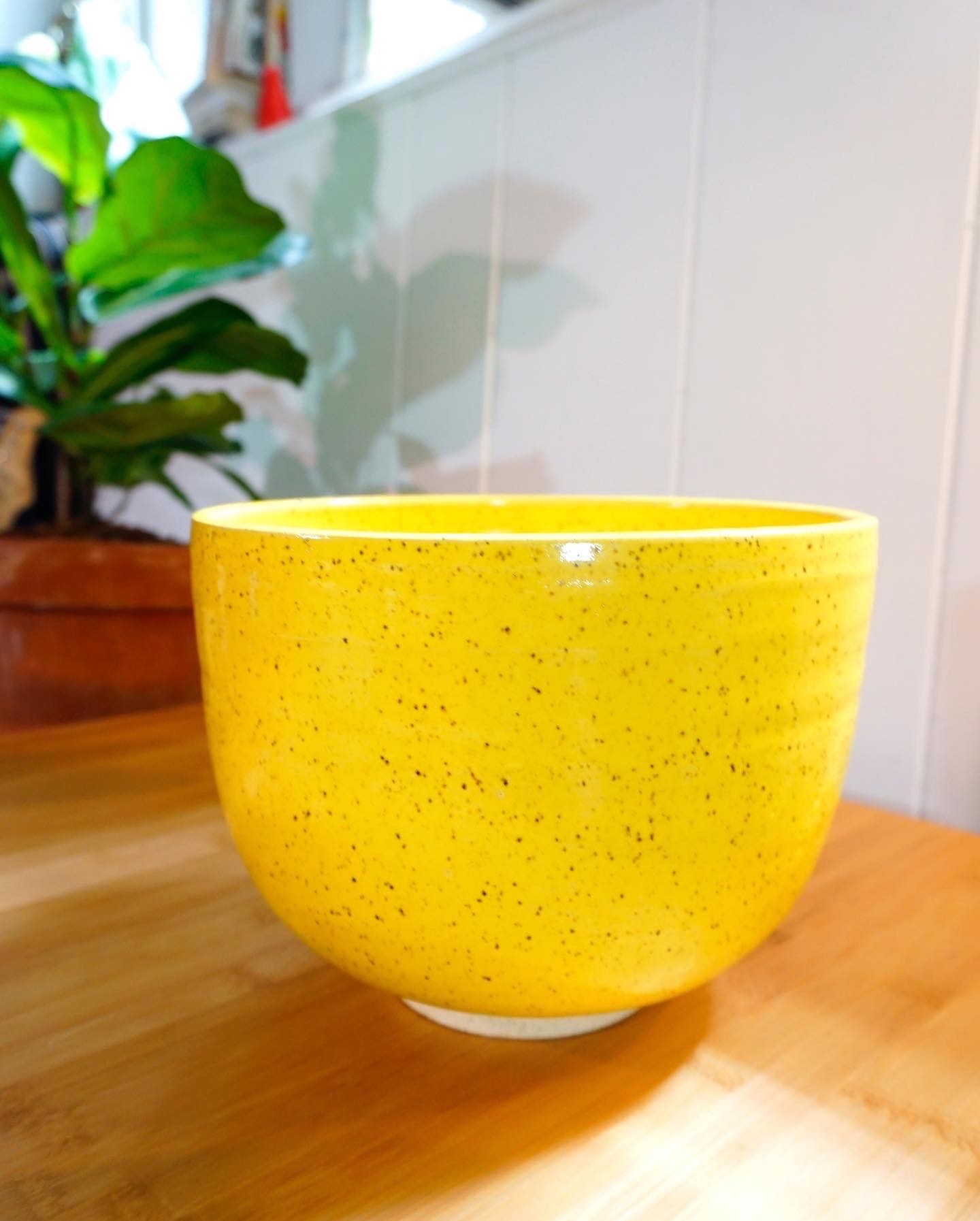We caught up with the brilliant and insightful Emma Konrad a few weeks ago and have shared our conversation below.
Emma, thanks for joining us, excited to have you contributing your stories and insights. Learning the craft is often a unique journey from every creative – we’d love to hear about your journey and if knowing what you know now, you would have done anything differently to speed up the learning process.
I started in my field like most people do, with a class in high school. I found ceramics difficult but rewarding. At the time, I was more invested in drawing and painting, and would go on to get a BFA at Minneapolis College of Art And Design (MCAD) in that practice but held a strong love for ceramics throughout. Half way through my degree I was going through a rough time in my personal life and decided to take a semester off of school. During that time, I took a ceramics course with Minneapolis College and just fell deep into the practice again. My schedule revolved around open studio hours. Within a couple weeks of that class ending, I signed up for a studio space with Fired Up Studios in Golden Valley,MN and I was teaching community classes within the year. I’ve been with my studio for nearly four years now and am teaching three-four classes a week.
Working in a communal studio has been critical to my clay learning process. Being able to share ideas with others and ask for feedback in a constructive way has pushed my practice more than I could have imagined. Being more open to criticism and learning new approaches to forms has changed the way I conduct myself within that creative space.
The ebb and flow of learning clay can be a beast in and of itself. There are these fundamental steps that take time and patience to work through. But, what often happens with clay is that you finally master this one step and you ride that high for a week until you have an “off” day and you get really discouraged. It’s similar in other artistic practices, but the difference is that by the end of this you have one successful piece and several balls of mushed, failed clay. It’s easy to lose spirit with this practice and that feels like the largest obstacle to pushing ahead.



Great, appreciate you sharing that with us. Before we ask you to share more of your insights, can you take a moment to introduce yourself and how you got to where you are today to our readers
Like I mentioned before, I graduated with a BFA in Drawing and Painting and a minor in Teaching Artistry with the intent of immediately getting an M.ED with an emphasis in visual arts and a K-12 licensure. However, I graduated December of 2020. I had witnessed 9 months of teachers being undervalued and overworked while also seeing and experiencing this seemingly endless global crisis. The last thing I wanted to do was pursue K-12 education. So I dove deeper into clay. By that point I had been maintaining my clay studio practice with also finishing my degree and it has become my refuge from the world. After graduation, I was offered employment as a studio technician with my studio and am still there, now also as a gallery coordinator. I’ve learned about the ins and outs of studio set-up and management and am still learning every day.
Through this space, I’ve been able to sustain my own making practice. I make function, wheel thrown pieces. My aesthetic has retro inspiration while maintaining a clean and consistent look. Especially coming out of 2020, I saw many people around me, myself included, want to indulge in their living spaces. I live with my art all around me and my work is made to be lived with. I table with my work at various places throughout the twin cities. I love answering questions, getting to know more people in the community, and sharing my work with others!
Do you think there is something that non-creatives might struggle to understand about your journey as a creative? Maybe you can shed some light?
I think many non-makers see only the successful side of the work without acknowledging the many failures it took to get there. When people pay for art, they’re paying for the time, the materials, and the failures. I think it was only within the last year that I felt like I had narrowed down what my work felt like. If you were to look at my market set-up, you’re seeing maybe 50 out of 1000 pieces that I’ve made over my practice that actually feel like they fit. I wouldn’t consider the 950 other pieces failures, they were just stepping stones.




What can society do to ensure an environment that’s helpful to artists and creatives?
Show up! I think when people get invitations to markets or openings, they have this resistance because they don’t want to purchase anything. And that’s okay! It means so much to me to have people show up to events, even if to just say hello and walk around. It’s a fantastic way to get in touch with your local makers scene while also showing the makers in your lives that you care about their work.
Contact Info:
- Website: Emmalekonrad.com
- Instagram: Emmalekonrad


